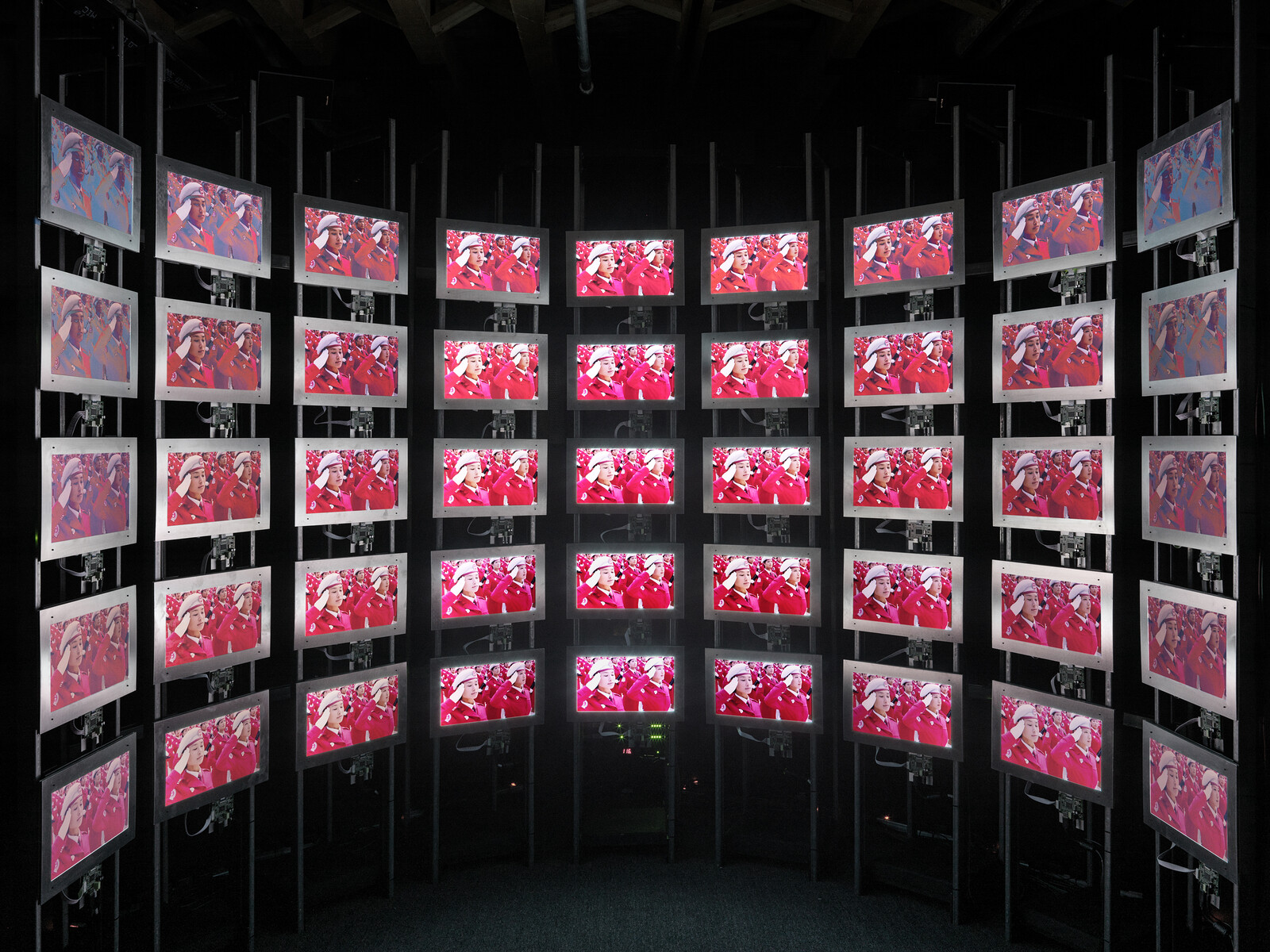Categories
Subjects
Authors
Artists
Venues
Locations
Calendar
Filter
Done
May 14, 2021 – Review
Smriti Keshari and Eric Schlosser’s “the bomb”
Hallie Ayres

When an atomic mushroom cloud is reduced to an image, it is more likely to inspire awe than terror. This is the paradox that haunts Smriti Keshari and Eric Schlosser’s the bomb (2021), an immersive adaptation of a 2016 film that transmutes violence into spectacle in an attempt to teach its audience a lesson. These sensational images, though ostensibly employed in the service of nuclear disarmament, instead exaggerate the perverse glamor of mass destruction.
At Pioneer Works, the black-box installation resembles a military command center, curved to simulate the enclosure of a cockpit. The effect calls to mind Charles Eames’s Glimpses of the U.S.A., which collaged thousands of images of “typical” American life into 13 minutes and projected them onto seven massive screens suspended within a geodesic dome. The reference to Eames’s consumerist propaganda, famously displayed at the American National Exhibition in Moscow in 1959, sets a prescient tone for a film that spends nearly half of its 59-minute runtime rehashing Cold War talking points. Playing through five rows of nine LED screens, the thematically grouped footage follows a loose chronological cycle: contemporary displays of military might; US propaganda footage of nuclear testing and safety drill education; the destruction of Hiroshima …
November 19, 2019 – Review
Jacolby Satterwhite’s “You’re at home”
Ania Szremski

“Let me tell you about my mother” is a famous line from Blade Runner (1982), the iconic movie that wonders about the violent intersections of life and technology and what really makes us human. A little over a decade later, at a time when technology’s coloring of the human experience had exponentially intensified, those words were recycled as a sample in “Aftermath,” a song off Tricky’s debut, genre-defying album, Maxinquaye (1995), which was named for his mother, Maxine Quaye, who died of suicide when he was little. Now fast-forward nearly 15 years after that, and consider Jacolby Satterwhite’s exhibition “You’re at home,” which rolls up everything I’ve just written about into a dizzying fractal pattern along with a manifold of other references, sounds, and iconography in which, indeed, the artist tells us all about his mother.
Tricky has said his mother used to write poems but had no place to put them. Patricia Satterwhite, too, was an artist without a public, without a means of access to the infrastructure and institutions that would have made her the star Jacolby says she dreamed of becoming. Before she died in 2016, she had lived with schizophrenia. Throughout her life she incessantly wrote …